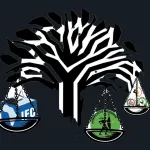SPONSORED CONTENT
Grid and battery storage capacity, not capital, are hurdles to plugging the electricity gap

Resolving South Africa’s energy crisis hinges largely on two crucial elements: (i) expanding the grid capacity and (ii) installation of sufficient battery storage capabilities. When complemented with storage capacity, we are confident that renewable energy will go a long way in alleviating our energy woes.
Given South Africa’s fiscal position, private participation in the rollout of infrastructure is essential to achieve the country’s growth ambitions. Pursuantly, private capital remains available – private sector capital continues to be available when bankable investments, not only in renewable energy but across the breadth of the infrastructure ecosystem, are available. A case in point is the how competitive the last two Renewable Energy Independent Producer Procurement Programme (REIPPP) Bid Windows were, from a participation (i.e. volume of bids received) and from a returns perspective (i.e, lower tariffs).
However, Bid Window 6 (BW6) revealed the core challenge the government and the private sector are faced with in increasing electricity generation by the required 78GW outlined in the Government’s Integrated Resource Plan (IRP). Despite Eskom being unable to meet the country’s power demands, the lack of grid capacity means that the increasing output from renewable energy will ultimately be stranded.
The grid – the problem:
It’s well known that the Northern Cape no longer has any available grid capacity. However, in the recently awarded BW6, it became evident that neither do the Eastern and Western Cape corridors, popular for their abundant wind resource. The result was the curtailment to the initially envisaged BW6 capacity.
In response to increasing frequency of load shedding, the government initially doubled the capacity available for tender from 2,600 MW in Bid 5 200MW in Bid Window 6 without having undertaken the necessary study of available grid capacity. The Bid Window was two times oversubscribed, yet only 1,000 MW was ultimately awarded, and not a single wind project was awarded due to the unavailability of grid capacity in the Eastern and Western Cape. Most of the Eastern and Western Cape grid capacity available when the bid window was released had subsequently been taken up by private generators when the bid was allocated. As noted by South African Wind Energy Association, an independent assessment of the grid would be crucial in assessing solutions to this problem. We are supportive of the view that urgent attention is required to improve or unlock grid capacity.
Importantly, not addressing grid constraints, and consequently the reduction in renewable energy as contribution to our energy mix would be a disaster for South Africa – if one considers that without the 6.2GW (6.5% of the total energy mix) provided by renewable energy sources in 2022, the country would have experienced more severe load shedding. So, to the extent that renewable energy, as the cheapest and cleanest energy source, contributes towards an improving energy availability factor, it has an undeniably significant role to play as part of our energy mix.
Renewable Energy – the reality:
To make the progress needed, we must be very clear on how far renewable energy can go in resolving our long-standing and frustrating energy challenges as a country.
In this context, it is important to understand energy generation on two levels – base load and peak load.
Base load refers to a power source that can generate and deploy across a set of 24 hours, and peak load refers to the power that can meet spikes in demand over shorter periods.
Renewable energy, as procured through the country’s REIPPP programme thus far, is inclement in nature. A wind farm can only generate electricity when the wind blows, and a solar PV farm can only generate power when there is sufficient Direct Normal Irradiation (DNI), the amount of solar radiation received per unit area.
Thus, to the extent that we need base load energy, renewable energy without storage capacity would not be sufficient. Efficient and cost-effective storage capacity is therefore crucial to store and dispatch the energy generated by renewables.
Progress to date:
This is one of the key reasons the IPP Office has released an RFP to procure battery energy storage technology (513MW through the first phase), which, when complemented with solar or wind generation, will provide clean base-load energy. All five of these prospective battery storage sites are situated in the Northern Cape province where most of the country’s solar plants are located, with the intention that these projects provide capacity, energy and ancillary services to Eskom. Further signs of progress the government has made in the transition to renewables include streamlining the process to ensure the swift implementation of renewable alternatives. This bid submission is scheduled to close on July 5, 2023.
Although much still needs to be done, we’ve come a long way in a relatively short period of time. Not too long ago, no one was allowed any private generation plant above 1MW. The Energy Action Plan however, recently announced the removal of licensing requirements (they still need to be registered) for generation projects of any size to enable private investment at a much larger scale.
Environmental and land-use authorisation timelines have also been reduced across the board. Thus, it’s evident that the government is making a concerted effort to create an ecosystem that fast-tracks the addition of new, low-carbon generation capacity, and the necessary conditions are being put in place to fast-track investment in renewables in South Africa.
Renewable energy enjoys policy support and political willingness, two critical tenets necessary for long-term investment decision making. The recent release of the Energy Action Plan is further evidence of this. Thus, as long as we have this clear policy certainty and a live/regularly updated Integrated Resource Plan that we adhere to, we’ll continue to enjoy sufficient availability of private capital to unlock South Africa’s abundant supply of wind and solar resources. DM/BM
Author: Luzuko Nomjana – Portfolio Manager and Credit Structuring Analyst at Prescient Investment Management.

DISCLAIMER:
- Prescient Investment Management (Pty) Ltd is an authorised financial services provider (FSP 612).
- The value of investments may go up as well as down, and past performance is not necessarily a guide to future performance.
- There are risks involved in buying or selling a financial product.
- This document is for information purposes only and does not constitute or form part of any offer to issue or sell or any solicitation of any offer to subscribe for or purchase any particular investments. Opinions expressed in this document may be changed without notice at any time after publication. We therefore disclaim any liability for any loss, liability, damage (whether direct or consequential) or expense of any nature whatsoever which may be suffered as a result of or which may be attributable directly or indirectly to the use of or reliance upon the information.
- Supervised representative.
















